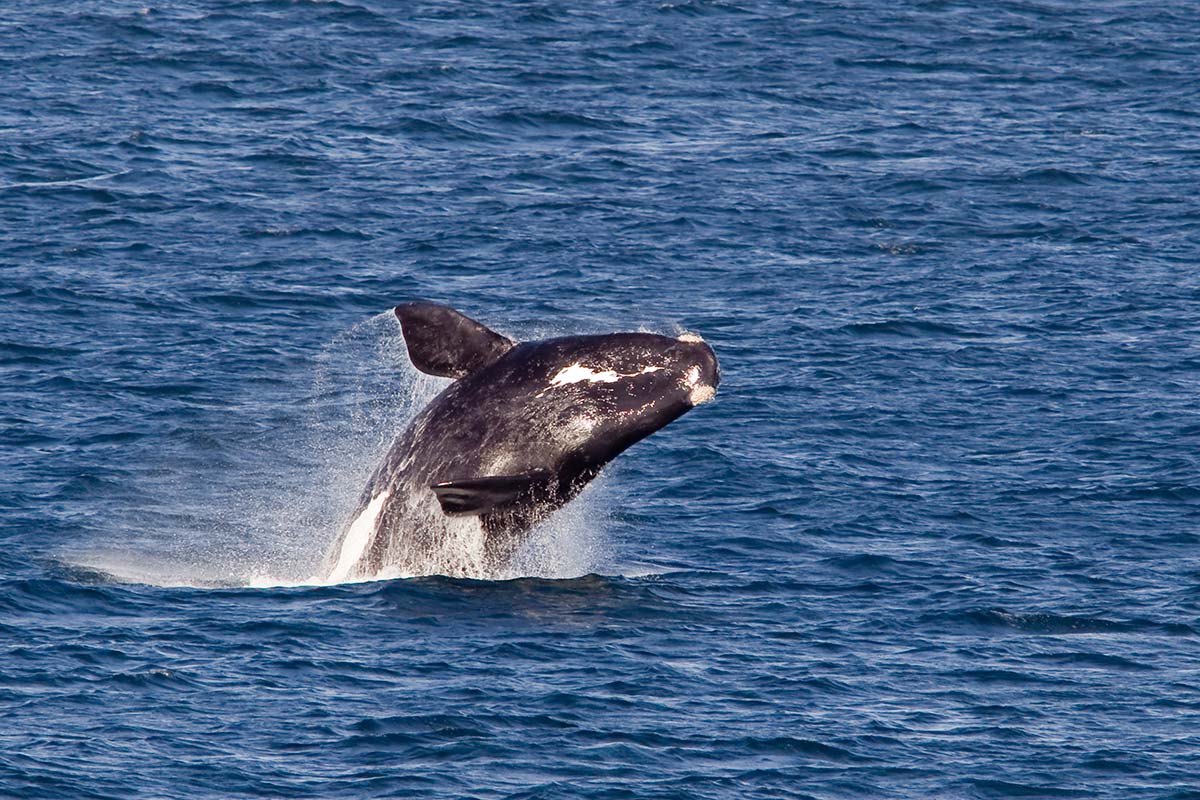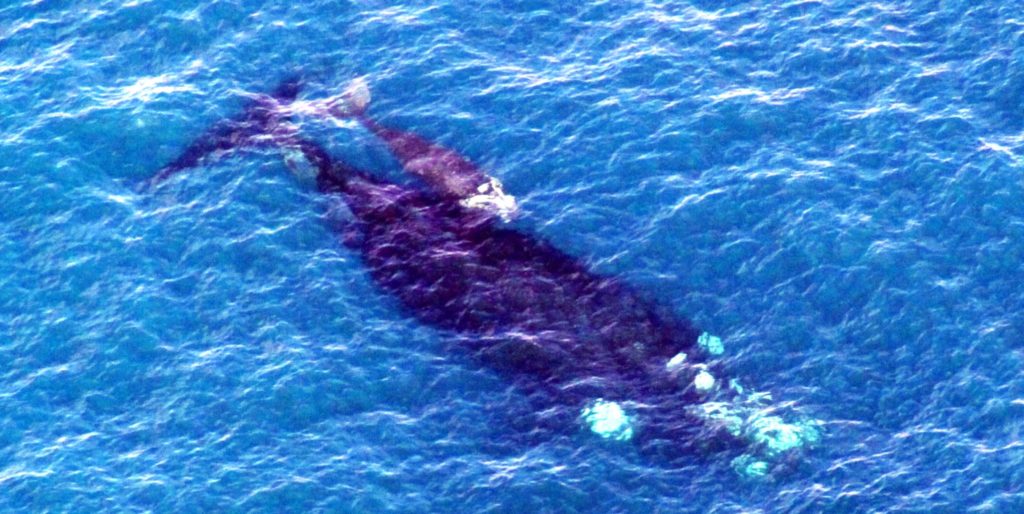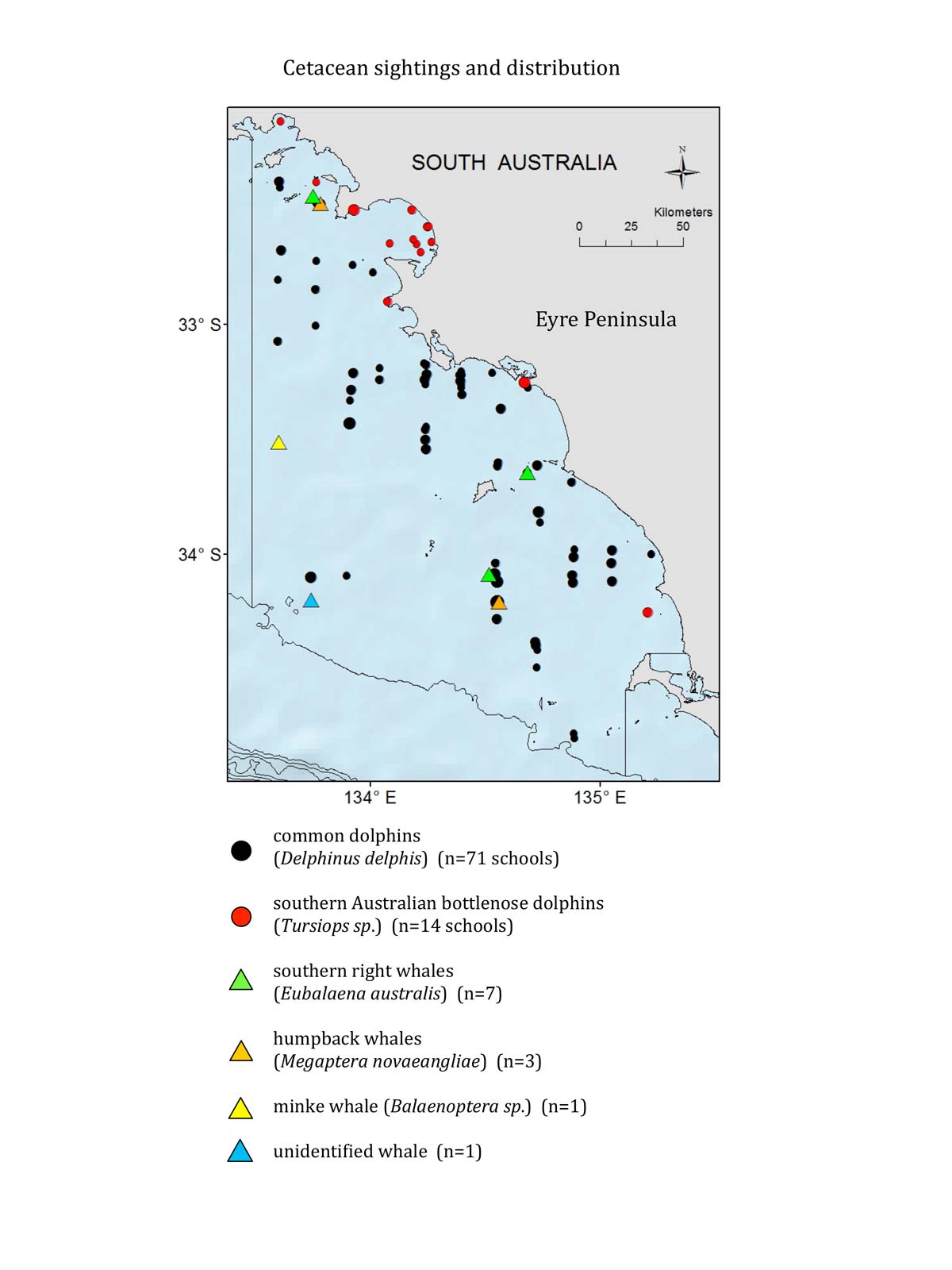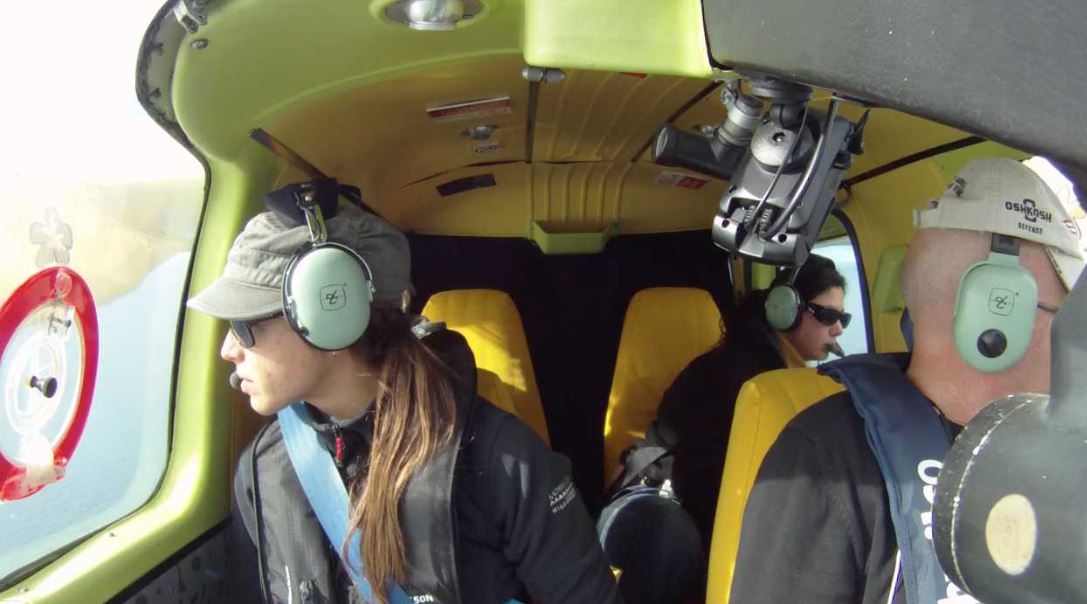
One of the first large-scale aerial surveys of the eastern Great Australian Bight found significant populations of dolphins and whales, underlining the importance of the region for marine biodiversity.
As part of the Great Australian Bight Research Program, Flinders University researchers covered 2236 km of transects extending to a maximum of 252 km from shore in mid-winter (July and August 2013).
The expansive aerial line-transect survey of the eastern Great Australian Bight (GAB) gives key insights into the occurrence, distribution and abundance of cetaceans in shelf and coastal waters in this region, where tourism, fishing and other commercial industries are active.
The GAB is one of Australia’s most valuable marine ecosystems supporting globally significant populations of marine mammals, seabirds, and diverse and highly endemic benthic assemblages, as well as important fishing, aquaculture and ecotourism resources. The region is also considered a significant frontier for potential offshore petroleum resources and is actively being explored for oil and gas.
The aerial survey, undertaken by Dr Kerstin Bilgmann, Dr Guido J Parra and Associate Professor Luciana Möller from the Cetacean Ecology, Behaviour and Evolution Lab and Molecular Ecology Lab at Flinders, found that the waters off the western Eyre Peninsula in the South Australia are an important habitat for dolphins and whales. Dr Bilgmann says dolphins were the most sighted cetacean species in the area.
“In the two weeks of flying, we sighted five cetacean species in coastal and offshore waters, including 71 schools of common dolphins (Delphinus delphis) and 14 schools of coastal bottlenose dolphins (Burrunan dolphin, Tursiops australis) as well as seven southern right whales (Eubalaena australis), three humpback whales (Megaptera novaeangliae), one minke whale (unknown species),” says Flinders University researcher Dr Kerstin Bilgmann, who now lectures in biological sciences at Macquarie University in Sydney. She says the the particularly high in abundance of common dolphins in continental shelf waters “shows that these waters represent an important habitat for this species”.

The second most sighted species was the coastal bottlenose dolphin, restricted to coastal waters within 12 km of the shoreline.
Sightings of endangered southern right whale sightings included a female with a calf, indicated that this endangered species uses the region for transiting from southern feeding grounds to coastal aggregation sites at the Head of Bight and Fowlers Bay, where they calf during winter.

“Southern right whales continue to recover from past whaling and it is possible that the region will become even more frequently used by this species in the future,” says Flinders University Associate Professor Luciana Möller, from the College of Science and Engineering at Flinders University.
Marine predators, such as dolphins, are impacted by fisheries interactions, accidental mortality with debris entanglement, pollution, coastal development and other human activities.
The $20 million Great Australian Bight Research Program was a collaboration between BP, CSIRO, the South Australian Research and Development Institute (part of PIRSA), the University of Adelaide and Flinders University. More than 100 scientists took part in a wide range of research projects which provide a whole-of-system understanding of the environmental, economic and social values of the region; providing an information source for all to use.
Research publications include this ScienceDirect (Elsevier) paper, ‘Occurrence, distribution and abundance of cetaceans off the western Eyre Peninsula in the Great Australian Bight’, is part of a volume of deep-sea research and is listed with a wide range of other papers on the Marine Innovations SA website.


